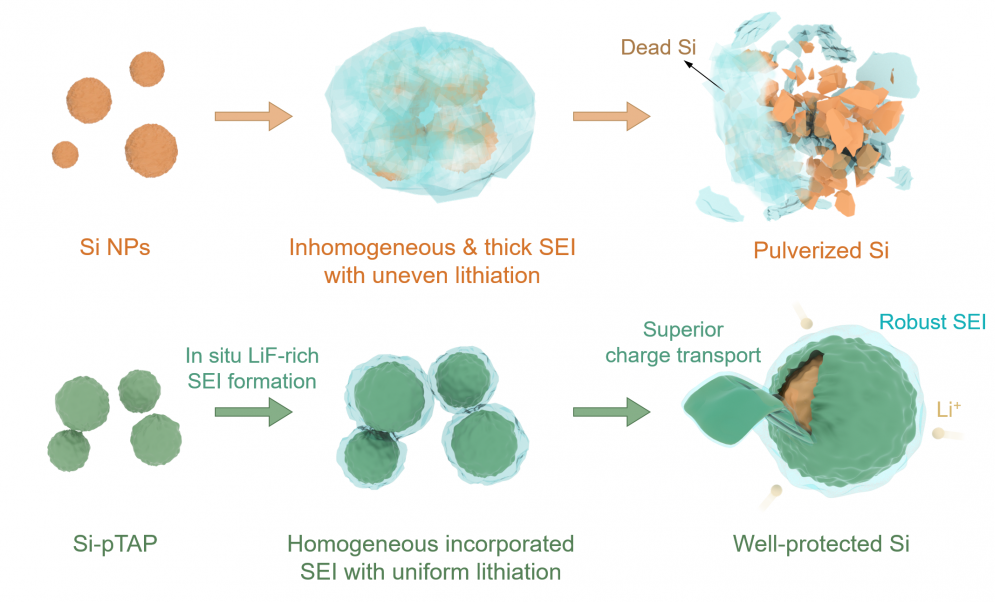
연구
Research Outcome
미래를 창조하는 포스텍 화학공학과
Lamellar sulfonated acid polymer-initiated in situ construction of robust LiF-rich SEI enables superior charge transport for ultrastable and fast charging silicon anodes
- Title of paper
- Lamellar sulfonated acid polymer-initiated in situ construction of robust LiF-rich SEI enables superior charge transport for ultrastable and fast charging silicon anodes
- Author
- [김원배교수 연구실] 층상 구조 전도성 고분자의 음극 계면 형성을 통한 고용량 및 급속충전 차세대 이차전지용 실리콘 음극활물질 개발
- Publication in journal
- Journal of Energy Chemistry Volume 98 , November 2024, Pages 134-143
- Publication date
- 20240621
[Abstract]
The extreme volume expansion of the silicon (Si) anodes during repeated cycles seriously induces undesirable interfacial side reactions, forming an unstable solid electrolyte interphase (SEI) that degrades the electrode integrity and cycle stability in lithium-ion batteries, limiting their practical applications. Despite considerable efforts to stabilize the SEI through surface modification, challenges persist in the development of high-performance Si anodes that effectively regulate intrinsic SEI properties and simultaneously facilitate electron/ion transport. Here, a highly conductive and organic electrolyte-compatible lamellar p-toluenesulfonic acid-doped polyaniline (pTAP) layer is proposed for constructing a robust artificial SEI on Si nanoparticles to achieve fast charging, long-term cycle lifespan and high areal capacity. The spatially uniform pTAP layer, formed through a facile direct-encapsulation approach assisted by enriched hydrogen bonding, contributes to the effective formation of in situ SEI with an even distribution of the LiF-rich phase in its interlamination spaces. Furthermore, the integrated artificial SEI facilitates isotropic ion/electron transport, increased robustness, and effectively dissipates stress from volume changes. Consequently, a notably high rate performance of 570 mAh g−1, even at a substantially high current density of 10 A g−1, is achieved with excellent cyclic stability by showing a superior capacity over 1430 mA h g−1 at 1 A g−1 after 250 cycles and a high areal capacity of ca. 2 mA h cm−2 at 0.5 C in a full cell system. This study demonstrates that the rational design of conductive polymers with SEI modulation for surface protection has great potential for use in high-energy-density Si anodes.




